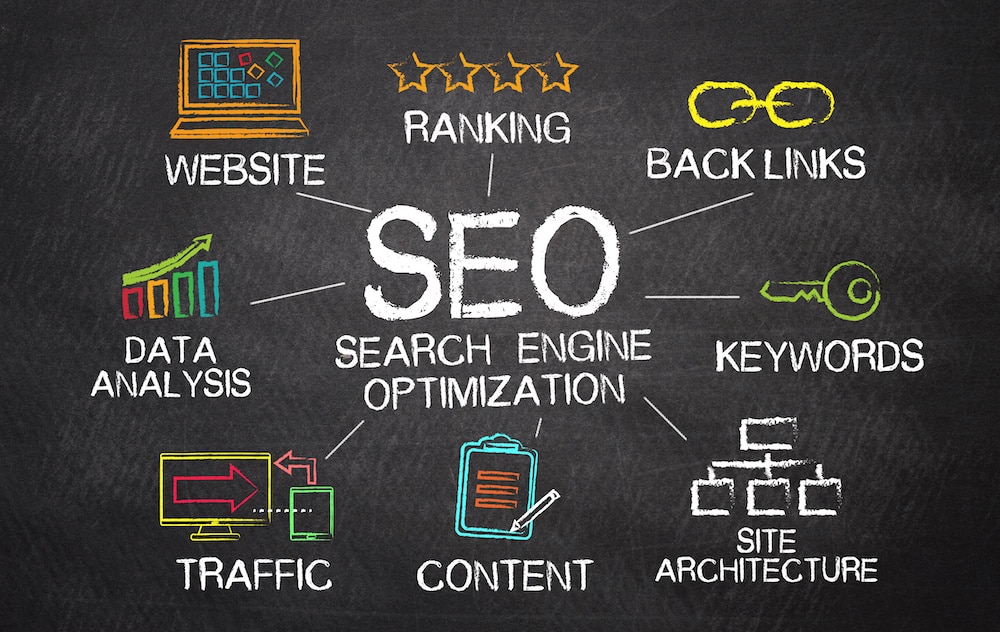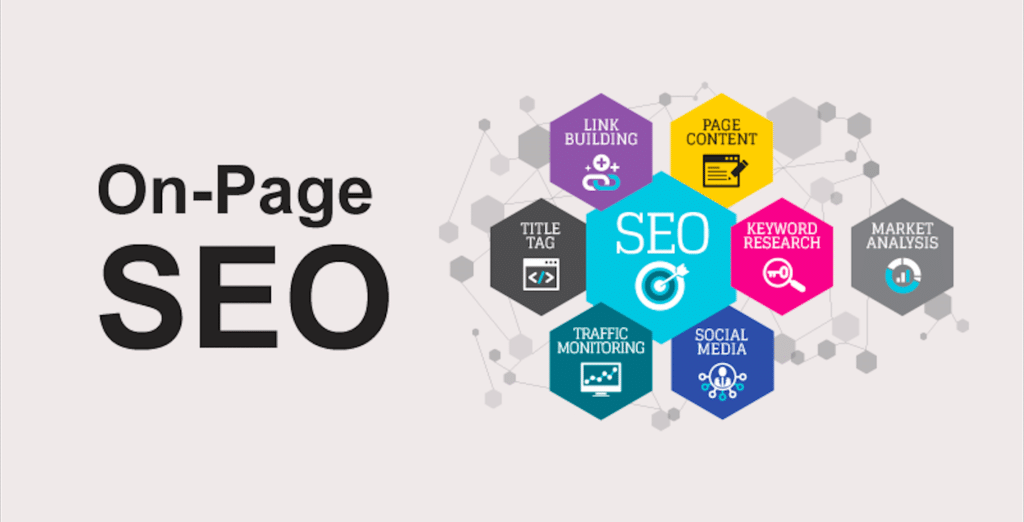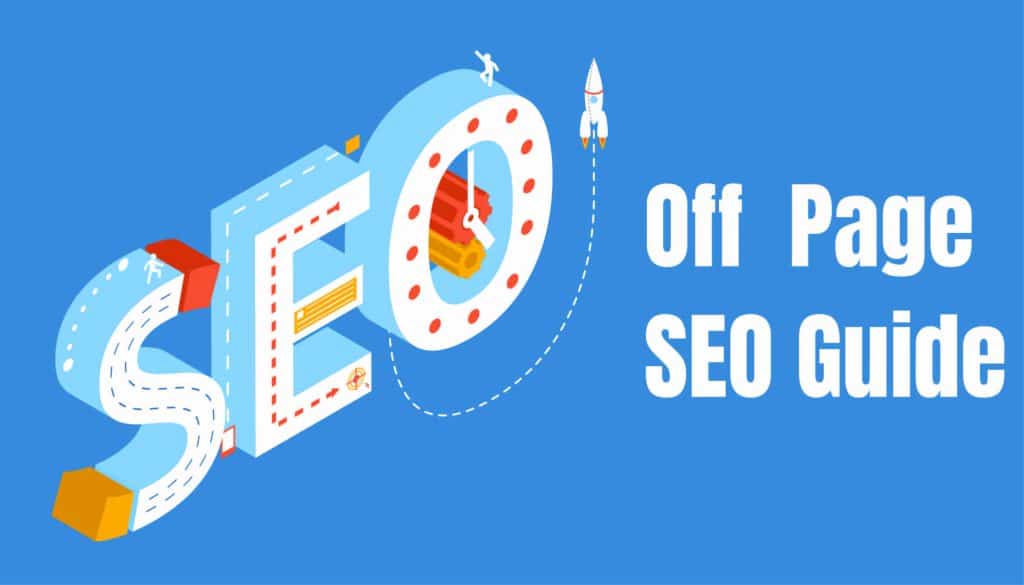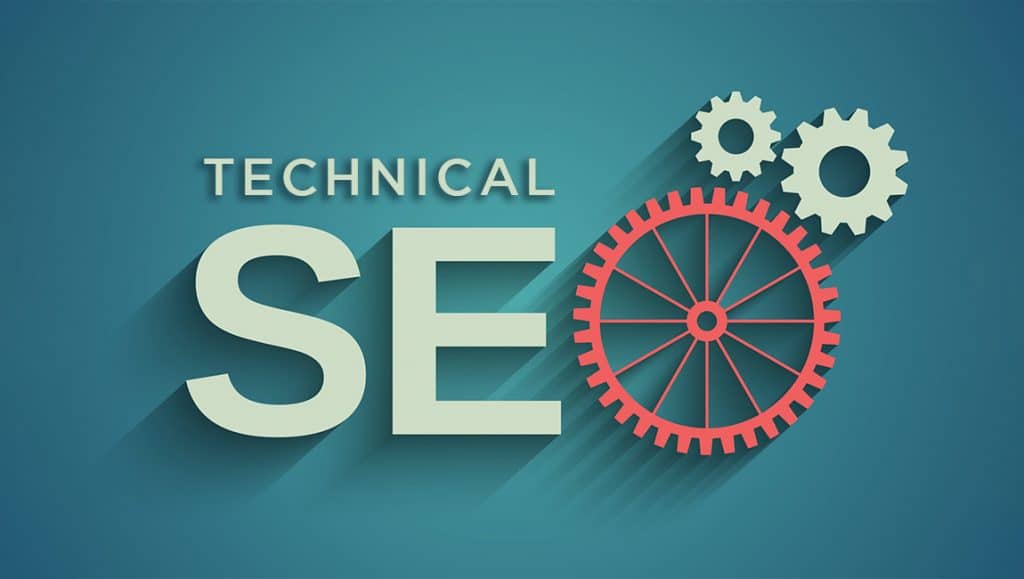Today, having a strong online presence is crucial for businesses in the digital age. With the high level of competition, how can you ensure that potential customers can locate your business? SEO, also known as search engine optimization, plays a crucial role in this aspect.
SEO acts as a guide for your website, assisting search engines in navigating and comprehending your content. Making sure that search engines like Google, Bing, and Yahoo can easily find your website is the main goal of SEO.
So, you might be asking yourself, “Why is search engine optimization important for my business?”The answer is, that it plays a crucial role in determining your success on the internet. Hence, having a well-optimized website is crucial. This is because it helps bring in more visitors who are genuinely interested in what you provide. In this article, I will review what SEO marketing is, how it works, and what you can do to win the SEO game.
Key Takeaways
- SEO (Search Engine Optimization) is crucial for improving your website’s ranking in search results.
- Mobile-friendliness is essential for SEO as most people access the internet through smartphones.
- High-quality, informative content that provides value to readers is key for good SEO.
- Regularly creating fresh content is important to keep visitors engaged and signal value to search engines.
- Backlinks from reputable websites can significantly boost your website’s authority and ranking.
- Key components include understanding SEO basics, on-page optimization, off-page optimization, and technical SEO.
Search Engine Optimization: Understanding The Basics

Chances are, you’ve been told repeatedly about the importance of search engine optimization (SEO) in digital marketing. But the question is, ‘Do you truly understand the basics of SEO? This is because, even with a general understanding, you might still find this intricate process challenging to fully comprehend. So, here’s everything you need to know about SEO and why it’s vital to succeed in today’s digital world.
What is SEO Marketing?
SEO means search engine optimization and is the process used to optimize a website’s technical configuration, content relevance, and link popularity so its pages can become easily findable, more relevant, and popular towards user search queries, as a consequence, search engines rank them better. In other words, Google recognizes your content as the most relevant to answer search queries, leading to effective SEO marketing.
SEO marketing aims to use techniques that demonstrate to Google that your content provides top answers to common search queries. When individuals search on Google, they are seeking solutions. An effective marketing strategy for SEO ensures that search engines recognize your content as the most informative and, therefore, the best.
This results in Google showcasing your content by featuring it prominently in search results or utilizing snippets in the “people also ask” (PAA) sections on a SERP. To ensure visibility, a successful marketing strategy will help Google identify your content and showcase it to users searching on Google.
What is SEO marketing? How do search engines work?
Search engines can be intricate systems for organizing information. They utilize web crawlers to scan vast amounts of content, organizing and indexing it into helpful results pages. Web crawlers are often referred to as bots or spiders. The search engine downloads the pages it crawls. It also uncovers fresh content while indexing new pages and websites.
Bots scan each page to gather information about the content that is relevant. Could you please specify the terms you are referring to? It specifies the content type for search engines to display the most relevant content based on search queries. Simply put, it organizes content based on what users are looking for.
For instance, if a person searches for “restaurants near me,” they are probably interested in finding a place to dine rather than a cooking tutorial. This implies that the search engine results page will display options for dining out or feedback on local restaurants. It will not delve into offering recipes directly on the search engine results page.
One important factor that search engine bots consider is the recency of the content on the page. Hence, it’s important to keep your content fresh and up-to-date to stay relevant in search engine rankings. The goal is to pinpoint new pages or updated pages with revised content. Another important factor that search engines look for is user engagement. When your audience engages with your content, it indicates that the content is valuable. Websites that have a substantial amount of user-generated content tend to receive higher rankings from search engines.
Search Engine Optimization: Key Components
As a digital marketer, one of your most important skills is being able to get people to find your brand, website, or business. But, staying on top of your game by knowing how SEO is changing is also important. As much as SEO changes all the time in small ways, its main ideas don’t. This is why SEO was broken down into parts, or bases, that you need to know about and do regularly:
#1. On-Page SEO

On-page SEO, as the name suggests, uses keyword features right on the page to help people find and use the information you give them. It’s a useful way for people to move around the website. On-page SEO is made up of several important parts. So, if you want to improve your website’s search engine score, on-page SEO is all the magic you can do with it. It’s like carefully setting up your store so that customers can easily move through it. Some essential components of on-page SEO and strategies are:
A. Title Tag
This is a shorter version of your page’s title. It should be fewer than 60 characters long and contain your major keyword, potentially a secondary keyword, and your brand’s name. In other words, this is how the title looks in SERPs, and it is a key factor in how visitors select to consume your content.
B. Meta Description
The meta description is a brief overview of the content on the page being referenced. It should be fewer than 160 characters long so that it may be fully read when displayed in the SERP. It generally informs readers about what to expect from the article and provides a compelling reason to click. Also, the meta description should include your major keyword or a synonym.
C. Images
Your content should include at least one image that is optimized for its description. The description should contain a keyword. You should also provide alt text on the image, that describes the image.
D. URL
The URL is the web address for the page. Keep things basic, and avoid using numbers and dates. Instead, use a hyphen to divide each word in your title. This makes it easier to read and recognize.
E. Internal Linking
Internal links are links to other information on your website. It informs the search engines that your material is part of a larger, relevant topic in which you are an expert. When establishing the hyperlink, provide a term for the anchor text. But, don’t use “click here” as your anchor text because it’s not a natural way to introduce the issue.
F. Content
This is the main content of the webpage. It’s the piece you wrote. Use the keyword inside the first 100 words, and ensure that the page is crafted with the search intent in mind. Use keywords or synonyms throughout the content to emphasize the page’s topic. Make sure you use good language and create the page in a way that is understandable to a wide range of people and academic backgrounds.
Unlike me, when I initially started working with SEO, I assumed it was all about putting keywords everywhere. But that’s a big no! This is because search engines are smarter these days, and they might penalize websites that use strange keywords. So, focus on producing outstanding content that adds value to your viewers, and incorporates your target keywords naturally.
#2. Off-Page SEO

Every business appreciates receiving referrals. This is because referrals indicate that individuals appreciate and have confidence in your services or products. Think of off-page SEO as your referral program. This strategy can be effective, but it may be challenging to implement at times. Generally, off-page SEO revolves around all the elements external to your website that impact your search engine ranking. Consider it like your online community reputation. Here is a breakdown of how it operates:
A. Earn and Reach Out for Backlinks
Links from other websites to your site are crucial for your Google ranking. In essence, backlinks from websites with higher credibility hold more value compared to those from less credible sites. This means, that having a greater number of high-quality backlinks will result in a higher ranking for your website. How can you increase the number of backlinks you have? There are multiple strategies, but some examples are:
- Creating unique and valuable content that attracts backlinks.
- Actively contacting websites where adding a link to your content would be beneficial.
- Posting as a guest
- PR coverage
Make sure to include a link to your website on your social media profiles and consistently share your blog content with your followers. This is because, receiving referral traffic can increase the visibility of a post, leading to a greater likelihood of obtaining backlinks. As much as, social media does not directly impact your Google ranking, your interactions on these platforms and how users engage with your content can send signals to Google that affect your ranking.
C. Build Brand Reputation
Google looks at more than one page on your site when deciding how high to rank a page on it. It looks at all the information on the web about your brand, such as reviews, ratings, listings, awards, and even mentions of your brand that aren’t related to your site. Because of this, SEO needs to build your brand’s image by optimizing your listings, getting good press, and asking for reviews. Although many of these concepts are relevant to local SEO, online businesses can also use many of these concepts to build their brands.
#3. Technical SEO

Do you remember when you clicked away from a website because it took too long to load? Yes, people who visit your site for too long might do the same thing. Everyone, including Google, likes websites that load quickly.
Technical SEO is about making sure that search engines can crawl and process your website properly by fixing things that aren’t visible to the user. Think of this as the store’s base and electrical wiring; therefore, everything must work properly. Here are some of the main technical optimizations to take care of:
A. Page Speed
In addition to image sizes, the code behind your website’s content and the sequence in which it loads might affect page performance. This is where lazy loading and page speed improvements come into play.
B. Security
Make sure your website uses HTTPS instead of HTTP.
C. Mobile-First
Being responsive to mobile devices is no longer sufficient. Google’s indexing is now mobile-first, so your website must be responsive.
D. Core Web Vitals
These three metrics measure a user’s interaction with your page. Learn how to enhance your core web vitals here.
E. URL Structure
Using /blog, /landing pages, and /product buckets organize your site structure, making it easier for Google to crawl, for people to navigate, and for you to segment data in reports.
F. Site Architecture
A user should be able to reach any page on your website with three or fewer clicks. Hence, internal connection is essential here.
G. Canonical URLs
A canonical URL is the URL you use to describe a collection of duplicate pages. Although Google will do its best to determine the canonical URL for every given set of duplicates, you can also indicate this to Google using canonical tags or 301 redirections.
H. Crawlability/indexability
Your sitemap and robots.txt files inform Google what you do and do not want it to crawl and index.
I. Schema Markup
It allows Google (and other search engines) to identify the types of content you have and deliver rich results when appropriate.
Effective Search Engine Optimization Strategy: For Smooth Sailing
Now that you’ve grasped the key concepts of SEO and the ever-changing landscape, let’s get down to business! It’s time to craft a winning SEO strategy specifically for your company.
#1. Make Good Use of Keywords
You should have keywords and use them on your web pages by now. Putting them somewhere is important if you want to get the most out of the search engines’ love for your work.
At least one time, the keyword should be in the title tag. In search engine results, this is what people see when they click on your story. The keyword should also be in your URL. This tells search engines what your page is about. Also, the keyword should be in the first 100 words of the text. A lot of experts and tools, like Yoast, say that you should put the keyword in the first line.
# 2. Do Not Pogo-Sticking with Relevant Content
When people visit your site and then quickly leave, this is called “pogo-sticking.” This means search engines keep track of how long people stay on a site and give sites that keep people there longer more weight. You want people to stay on your site, not just click on it.
So how do you keep from pogo-sticking? The things you write are what the keywords want. Don’t waste time, get right to the point. This way, people will know that your content is useful and want to read more to find the answers they need.
#3. Use Long-Tail Keywords
Long-tail keywords add a word or phrase at the end of the term to make it longer. To be more specific about what people read, these terms go one step further in search. Type the keyword into the search question and see what other possible keywords show up in a drop-down list. This will give you an idea of long-tail keywords.
To get better search results, use long-tail keywords in your writing. You can make sure you write about the things that the reader wants to know about by using long-tail keywords in your content.
#4. Eliminate Non-Performing Pages
Pages that don’t do anything are sometimes called “zombie pages” because they appear but don’t get any traffic. Get rid of them because they don’t help your site rank because they don’t have any useful information on them. The search engine will then re-index your site, which will help it see that all of your content is useful and important.
Check out which pages are getting visitors with a tool like Semrush. Get rid of the links on your site that aren’t helping you. This is because search engines would rather have one steady page of relevant content than a bunch of smaller pieces of content that are hard for them to sort and find useful.
#5. Study Your Field to Get Backlinks
Please keep in mind that a backlink is a link from another website that says your site has good information. It means that the website either got information from you or thinks that your website is a good place to find more information. It can be hard to get backlinks, though.
This is where a study of the business can be very helpful. You become an expert in your field when you do a study. People in the same field can use the study’s figures, and they will credit you as the source of the information. It might take some time and cost some money, but it’s worth it in the end to be the leader in your business when it comes to data.
The Evolving Landscape of SEO: Staying Ahead of the Curve
SEO is always evolving, just like fashion! What was successful in the past may not yield the same results now. Hence, it’s crucial to stay informed about the newest trends to ensure your website maintains a high ranking in search results. Here are some exciting trends to keep an eye on so you can stay ahead of the curve and avoid pitfalls:
#1. Optimizing for Voice Search
Can you remember when people found it strange to talk on their phones a few years ago? Now, voice search is gaining popularity. More individuals are turning to voice assistants such as Siri and Alexa for web searches. In other words, optimizing your website involves using natural language and addressing common industry-related questions to enhance voice search.
For instance, instead of searching for “the best pizza near me,” someone could simply ask, “Hey Alexa, where can I find the most delicious pizza?” For optimal results, think about using the casual language that people use in their daily conversations. Create your content to address the queries your audience may voice. It’s more than just focusing on specific words; it’s about being a welcoming and supportive presence in the room.
#2. Prioritizing Mobile Indexing
Who else feels like their phone is attached to their hand? Yes, I thought as much. Mobile-first indexing means that Google expects websites to be optimized for viewing on small screens.
I recall the frustration of finding a great website on my laptop, only to see it as a mess on my phone. Mobile-first indexing guarantees that your website is not only mobile-friendly but also optimized for a superior user experience on smartphones and tablets.
Imagine your website as a versatile performer, effortlessly adjusting to different screen sizes. In the same way, Google prioritizes mobile-friendly websites by giving them higher rankings, emphasizing the importance of SEO performance.
#3. User Experience and Core Web Vitals
Imagine you enter a store where everything is tidy, well-arranged, and effortless to locate. In the same way, your website should provide that type of experience online.
One fateful day, I came across a website with beautiful visuals, but the pages took forever to load. It felt like waiting for a sluggish elevator—annoying and a guaranteed way to lose interest. So, enhance the user experience and Core Web Vitals to create an enjoyable website exploration.
Finally, Google takes into account page speed, interactivity, and visual stability when determining your site’s ranking. Communication is not only about the words you use but also about the way you deliver them. Make sure to maintain a quick pace, keep the content interesting, and ensure your visitors are satisfied. This is just a small list of what people think will happen in the future of SEO, even though most of it has already happened. So, however As the digital world changes all the time, you can make sure that your website stays noticeable and continues to bring in new customers by keeping up with these new trends and making changes to your SEO strategy as needed.
Search Engine Optimization: Adapting to Algorithm Updates
Now, let’s talk about search engine algorithms, which are like the sailors on an SEO ship. These algorithms help us find our way through the huge ocean of digital material, like smart sailors. Therefore, staying ahead means being able to change direction when they do.
Google’s “Snappy Search” update recently changed things by putting even more focus on lightning-fast loading times. However, you’re good to go if your site looks like a fast cheetah instead of a slow turtle. Staying flexible is important for keeping up with changes to algorithms. You don’t have to be able to guess every move, but you do need to be able to change your sails when the winds of change blow.
So, to stay up to date on the latest algorithm changes, I suggest that you follow respected SEO blogs and websites. You can also find a lot of free tools online that can help you check how well your website is doing with SEO and find ways to make it better.
Finally, don’t forget that SEO is a race, not a sprint. However, focusing on these changing trends and making sure your website is always optimized will help your business stay noticeable in search results and bring in new customers in the digital world that is always changing.
Measuring SEO Success: Tracking Your Progress
The process of search engine optimization never ends, so it’s important to keep track of your work. You can keep an eye on your website’s traffic, general SEO performance, and where it ranks for relevant keywords with several free and paid SEO tools.
Key Performance Indicators (KPIs) to Keep an Eye On:
- Organic Traffic: This is the number of people who find your website through search engines instead of paid ads.
- Keyword Ranking: Keep an eye on where your website stands in search results for the terms you want to rank for.
- Conversion Rate: This is the share of website users who do what you want them to do, like buy something or get in touch with you.
By keeping an eye on these KPIs, you can see how well your SEO plan is working and make changes as needed.
In addition to that, don’t forget that SEO costs money but pays off in the end. If you keep improving your website by following these steps, you can get more free traffic, leads, and eventually reach your business goals. In the next part, we’ll talk about some common SEO mistakes you should avoid and give you some ideas about how SEO will change in the future.
Case Studies: SEO Success Stories in Action
While the core principles of SEO remain consistent, seeing them applied in real-world scenarios can be incredibly helpful. This section showcases a few examples of businesses that leveraged search engine optimization strategies to achieve impressive results:
#1. From The Crew at “Tech Trends Today”
Because they were up against tough competition, the team improved everything on the page, from the catchy title tags to the useful meta descriptions. As a result,? Their website went to the top of search engine results and got a steady flow of good users.
#2. Captain Content’s Blog Boot
Captain Content knew that off-page performances were important. By getting good backlinks and participating in a community of writers, the blog turned into an online beacon that led more people to its sites.
#3. The Seaman Online Shopping Empire
Technical search engine optimization was a big part of Seaman’s online store, which made sure that purchases went quickly and easily for their customers. As a result,? The company went through the digital seas without a hitch, and happy buyers came back for more.
These are some ways that SEO can be used to help a business reach its goals. You can get your website to the top of search results and have long-term success online if you use these strategies regularly and keep up with the latest trends.
How can I do SEO for my website?
Five Ways to Improve Your Site’s Ranking (SEO)
- Publish relevant, authoritative content. We believe that on-page SEO is the key to search engine success.
- Update your content regularly.
- Metadata.
- Have a link-worthy site.
- Optimize for mobile and execute technical SEO.
Can I learn SEO for free?
You can learn how to do search engine optimization for free. All you need are strong resources written or created by SEO experts
Which is the best SEO tool?
- Surfer for AI integration.
- Semrush for SEO rank tracking.
- SEOptimer for SEO audits.
- Ahrefs for competitor research.
- Clearscope for SEO content optimization.
Conclusion
Remember when you finally got that recipe just right after weeks of making changes and getting better at it? That’s kind of how search engine optimization works. It’s an ongoing process that needs hard work and constant growth.
Think about it this way: you wouldn’t expect to plant a seed today and pick a tasty tomato plant tomorrow, would you? It takes time and patience to do SEO, but it’s worth it in the end. As you learn more about SEO and try out more advanced strategies, you’ll be well on your way to making a strong online profile that brings in the right customers. Now comes the fun part: you’re already miles ahead of the game as a result of what you’ve learned in this guide!
References
- wordstream.com
- forbes.com
- techtarget.com
- Digitalmarketinginstitute.






